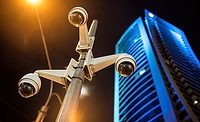In recent years, IP networked surveillance and access control solutions have become the de facto choice for new installations and upgrades. In addition to overall improved performance, a main driver behind this trend is the flexibility and convenience of being able to remotely communicate, monitor and control various types of IP devices. Looking beyond security, the vast amount of data these systems generate provides an additional benefit, allowing organizations to mine and repurpose information for advanced security applications as well as to improve overall business operations.
However, the reality is that if a system or even a single device should lose power or fail, system operation will stop, immediately compromising the security of people, property and assets. Additionally, the vital and often critical need to collect data from networked systems and devices significantly increases the need for system operation to ensure the constant and continued flow of data. Therefore, it is imperative that all networked products can be remotely monitored and managed to ensure security on a 24/7 basis and to effectively respond to trouble alerts and/or device failures.
As these networked systems continue to grow in popularity, one key factor remains the main ingredient for ensuring the integrity of all these IP devices and systems: reliable and consistent power. The bottom line is that without power, even the most advanced systems are rendered as ineffective as if there were no security systems in place at all.
New advancements in networked power management provide critical information on devices and system status with the ability to detect potential failures in advance. For end users, there are a number of benefits, including heightened security and cost savings from the ability to take preventative measures before an outage can occur.
The new science behind today’s power management solutions can monitor the overall health of a system via the ability to remotely monitor, control and report diagnostics in real time from power supplies and peripheral components. This includes such critical operation criteria as AC presence, battery status and health, voltage output, current load, ambient temperature and more. All of these capabilities ensure that the highest levels of system integration and integrity are consistently maintained.
While the advanced capabilities of today’s networked power solutions provide the confidence of knowing systems are being monitored around the clock in order to take the fullest advantage of the benefits they deliver, it’s vital to work with installers and integrators who are familiar with and up to date on the latest available technologies and have strong relationships with the manufacturers who provide them.
The ability to improve security and continuity of operations is crucial, but power management solutions can also reduce the time and expense associated with service calls by providing the ability to remotely monitor real-time diagnostics. The information provided by this capability allows installers and integrators to more quickly and efficiently identify the precise source and location of the problem. Simple solutions, such as rebooting a device remotely, can often resolve an issue. However, should on-site resolution be needed, the dispatched technician will have the correct parts and tools they need upon arrival and can get to work on resolving the problem immediately, rather than having to diagnose the issue at the site.
In addition to simplifying and streamlining the repair process, networked power management also enables preventative maintenance beyond the regularly scheduled battery replacement, camera dome and lens cleaning, panel wiring inspection, etc. that are typically included in traditional contracts. For example, servicing dealers or integrators can receive notification of potential issues, providing important information they need to quickly address they need to quickly address these issues or even prevent potential problems from occurring. For both end users and installers, the goal is to have service technicians spend as little time as necessary in the field, and the information a networked power management solution provides significantly contributes to achieving this goal.
As every organization’s demand for heightened security continues to increase, today’s power solutions provide end users with peace of mind from knowing that the integrity, stability and operation of their systems are being professionally monitored and maintained – improving overall security and reducing the liabilities associated with downtime. Additionally, the ability to eliminate unnecessary service calls and reduce the amount of time technicians spend on-site allows these solutions to also deliver significant cost savings. Given these benefits, it should come as no surprise that the new science of power management is already reshaping the security landscape for end users, servicing installers and integrators alike.



